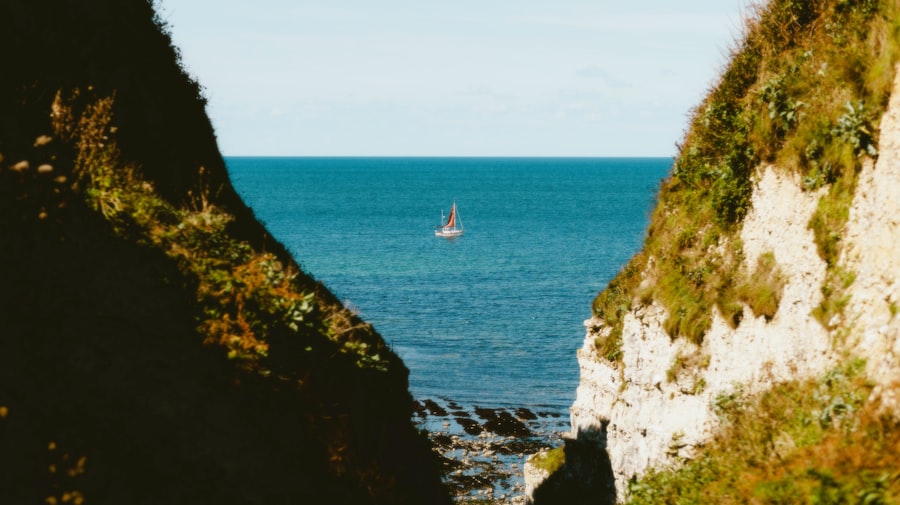Download links
How to install 8k8 Banaue Rice Terraces: A Stunning UNESCO World Heritage Site APK?
1. Tap the downloaded 8k8 Banaue Rice Terraces: A Stunning UNESCO World Heritage Site APK file.
2. Touch install.
3. Follow the steps on the screen.
Description
The Banaue Rice Terraces, often referred to as the “Eighth Wonder of the World,” boast a rich history that dates back over 2,000 years. These terraces were carved into the mountains of Ifugao province in the Philippines by the indigenous Ifugao people, who developed sophisticated agricultural techniques to cultivate rice in a challenging mountainous environment.
C., although some estimates suggest that the rice cultivation practices may have started even earlier.
The terraces are not merely agricultural fields; they represent a deep connection between the Ifugao people and their land, showcasing their ingenuity and resilience in adapting to their environment. The historical significance of the Banaue Rice Terraces extends beyond their age; they are a testament to the Ifugao’s cultural identity and social structure. The terraces were built using traditional methods, with minimal use of modern technology, relying instead on hand tools and the labor of community members.
This communal effort reflects the Ifugao’s strong sense of community and cooperation, as families would work together to maintain and expand the terraces. Over centuries, these rice terraces have become an integral part of the Ifugao’s way of life, influencing their customs, rituals, and even their social hierarchy. The terraces are not just agricultural landscapes; they are living cultural landscapes that embody the history and traditions of the Ifugao people.
Key Takeaways
- The Banaue Rice Terraces were built over 2,000 years ago by the Ifugao people without the use of modern tools and machinery.
- The terraces are a symbol of the Ifugao people’s sustainable agricultural practices and their deep connection to the land.
- Conservation efforts for the Banaue Rice Terraces include the Ifugao Rice Terraces Conservation Project and the involvement of local communities in preservation efforts.
- The engineering of the terraces involves an intricate irrigation system that utilizes gravity to distribute water evenly across the different levels of the terraces.
- Tourism has brought both economic opportunities and environmental challenges to the Banaue Rice Terraces, leading to the need for sustainable tourism practices and responsible visitor behavior.
- The future of the Banaue Rice Terraces as a UNESCO World Heritage Site depends on continued conservation efforts and the balance between tourism and preservation.
The Cultural Significance of the Banaue Rice Terraces
The cultural significance of the Banaue Rice Terraces is profound, as they are deeply intertwined with the spiritual beliefs and practices of the Ifugao people. The terraces are often seen as sacred spaces, where rituals and ceremonies are performed to honor the spirits of nature and ensure a bountiful harvest. The Ifugao believe that their ancestors inhabit the land, and thus, maintaining the terraces is not only an agricultural duty but also a spiritual obligation.
This connection to their ancestors is reflected in various cultural practices, such as the “pattong,” a ritual performed before planting season to seek blessings for a successful crop. Moreover, the rice terraces serve as a symbol of identity for the Ifugao people. They are a source of pride and a representation of their heritage, showcasing their unique agricultural practices that have been passed down through generations.
The terraces are also a focal point for cultural festivals, such as the Imbayah Festival, which celebrates Ifugao culture through traditional music, dance, and rituals. These events not only reinforce community bonds but also educate younger generations about their rich heritage. The terraces thus play a crucial role in preserving the Ifugao’s cultural identity in an increasingly globalized world.
The Conservation Efforts for the Banaue Rice Terraces

In recent years, conservation efforts for the Banaue Rice Terraces have gained momentum due to increasing concerns about their preservation amid environmental challenges and modernization pressures. The Philippine government, along with local communities and various non-governmental organizations (NGOs), has initiated several programs aimed at protecting these historical landscapes. One notable effort is the establishment of the Banaue Rice Terraces Conservation Program, which focuses on sustainable agricultural practices, reforestation, and community engagement to ensure that the terraces remain viable for future generations.
Additionally, international organizations such as UNESCO have played a pivotal role in raising awareness about the importance of preserving the rice terraces. In 1995, UNESCO designated the Banaue Rice Terraces as a World Heritage Site, recognizing their outstanding universal value and cultural significance. This designation has helped attract funding and support for conservation initiatives.
Local farmers have been encouraged to adopt traditional farming methods that promote biodiversity and soil health while also enhancing the terraces’ resilience to climate change. Workshops and training sessions have been organized to educate farmers about sustainable practices, ensuring that they can continue to cultivate rice while preserving their cultural heritage.
The Unique Engineering of the Banaue Rice Terraces
| Aspect | Metric |
|---|---|
| Location | Ifugao Province, Philippines |
| Age | Over 2,000 years old |
| Size | Approximately 10,360 square kilometers |
| Construction | Hand-built by the Ifugao people |
| Engineering | Utilized stone and mud walls to create terraces |
| Function | Used for rice cultivation and irrigation |
The engineering marvel of the Banaue Rice Terraces lies in their intricate design and construction techniques that have allowed them to thrive in a challenging mountainous terrain. The terraces are built using a series of stone walls that create flat areas for rice cultivation, effectively transforming steep slopes into arable land. This ingenious design not only maximizes agricultural output but also minimizes soil erosion, which is crucial in maintaining soil fertility over time.
The careful planning involved in constructing these terraces demonstrates a deep understanding of hydrology and topography by the Ifugao people. Water management is another critical aspect of the engineering behind the rice terraces. The Ifugao developed an elaborate irrigation system that channels water from nearby rivers and streams into the terraces through a network of bamboo pipes and channels.
This system ensures that each terrace receives adequate water while preventing flooding or drought conditions. The careful balance of water distribution is essential for rice cultivation, as it directly impacts crop yields. The engineering techniques employed in constructing and maintaining these terraces reflect not only practical agricultural knowledge but also a profound respect for nature and its resources.
The Impact of Tourism on the Banaue Rice Terraces
Tourism has become a double-edged sword for the Banaue Rice Terraces, bringing both opportunities and challenges to this UNESCO World Heritage Site. On one hand, tourism has provided much-needed economic benefits to local communities. Visitors flock to Banaue to witness the breathtaking beauty of the terraces, contributing to local businesses such as hotels, restaurants, and guided tours.
This influx of tourists has created job opportunities for many residents, allowing them to earn a livelihood while sharing their culture with visitors from around the world. However, the rise in tourism has also raised concerns about environmental degradation and cultural commodification. Increased foot traffic can lead to soil erosion and damage to the delicate terrace structures.
Additionally, some locals worry that tourism may dilute their cultural practices as they cater to visitors’ expectations rather than preserving their authentic traditions. To address these issues, local authorities have implemented measures to promote responsible tourism practices, such as limiting visitor numbers during peak seasons and encouraging eco-friendly activities that respect both the environment and local culture.
The Future of the Banaue Rice Terraces as a UNESCO World Heritage Site

Striking a Balance between Conservation and Community Needs
As a UNESCO World Heritage Site, the future of the Banaue Rice Terraces depends on effective management strategies that balance conservation with community needs and tourism development. Ongoing efforts must focus on raising awareness about the importance of preserving this cultural landscape while ensuring that local communities benefit from its status as a heritage site. Collaborative initiatives involving government agencies, NGOs, and local stakeholders are essential for creating sustainable development plans that prioritize both environmental protection and economic growth.
Education: The Key to Securing the Future
Education plays a crucial role in securing the future of the rice terraces. By fostering a sense of pride among younger generations regarding their cultural heritage, communities can inspire future caretakers of these historical landscapes. Educational programs that emphasize traditional farming techniques and environmental stewardship can empower youth to engage actively in conservation efforts.
A Model for Sustainable Agriculture and Cultural Preservation
As global awareness about climate change grows, there is an opportunity for the Banaue Rice Terraces to serve as a model for sustainable agriculture practices that harmonize with cultural preservation efforts worldwide. In conclusion, while challenges remain for the Banaue Rice Terraces, there is hope for their continued existence as a vital cultural landscape. Through concerted conservation efforts, responsible tourism practices, and community engagement, these ancient terraces can endure as a testament to human ingenuity and resilience for generations to come.
If you’re interested in exploring more about online games, you should check out the article 8k8 Laro: Game Online Terbaru dengan Grafis Terbaik. This article discusses the latest online game with stunning graphics that will surely captivate your attention. Just like the mesmerizing beauty of the Banaue Rice Terraces, this game promises to provide a visually immersive experience that will leave you in awe.
FAQs
What are the Banaue Rice Terraces?
The Banaue Rice Terraces are ancient terraces carved into the mountains of Ifugao in the Philippines. They are often referred to as the “Eighth Wonder of the World” and are a UNESCO World Heritage Site.
How old are the Banaue Rice Terraces?
The Banaue Rice Terraces are estimated to be over 2,000 years old, making them one of the oldest and most remarkable examples of terrace farming in the world.
What is the significance of the Banaue Rice Terraces?
The terraces are not only a stunning feat of engineering, but they also represent the sustainable agricultural practices of the indigenous Ifugao people. They are a symbol of Filipino heritage and culture.
How were the Banaue Rice Terraces constructed?
The terraces were built by hand, with the Ifugao people using minimal tools and primarily relying on their knowledge of the land and natural resources. The construction of the terraces is a testament to the ingenuity and skill of the ancient Ifugao people.
What is the current state of the Banaue Rice Terraces?
While the terraces are still in use for farming, they have faced challenges such as erosion and the migration of younger generations away from traditional farming practices. Efforts are being made to preserve and protect the terraces for future generations.
Can visitors explore the Banaue Rice Terraces?
Yes, visitors are welcome to explore the Banaue Rice Terraces. There are hiking trails and viewpoints that offer breathtaking views of the terraces and the surrounding landscape. It is important for visitors to respect the land and the local culture while visiting the terraces.





